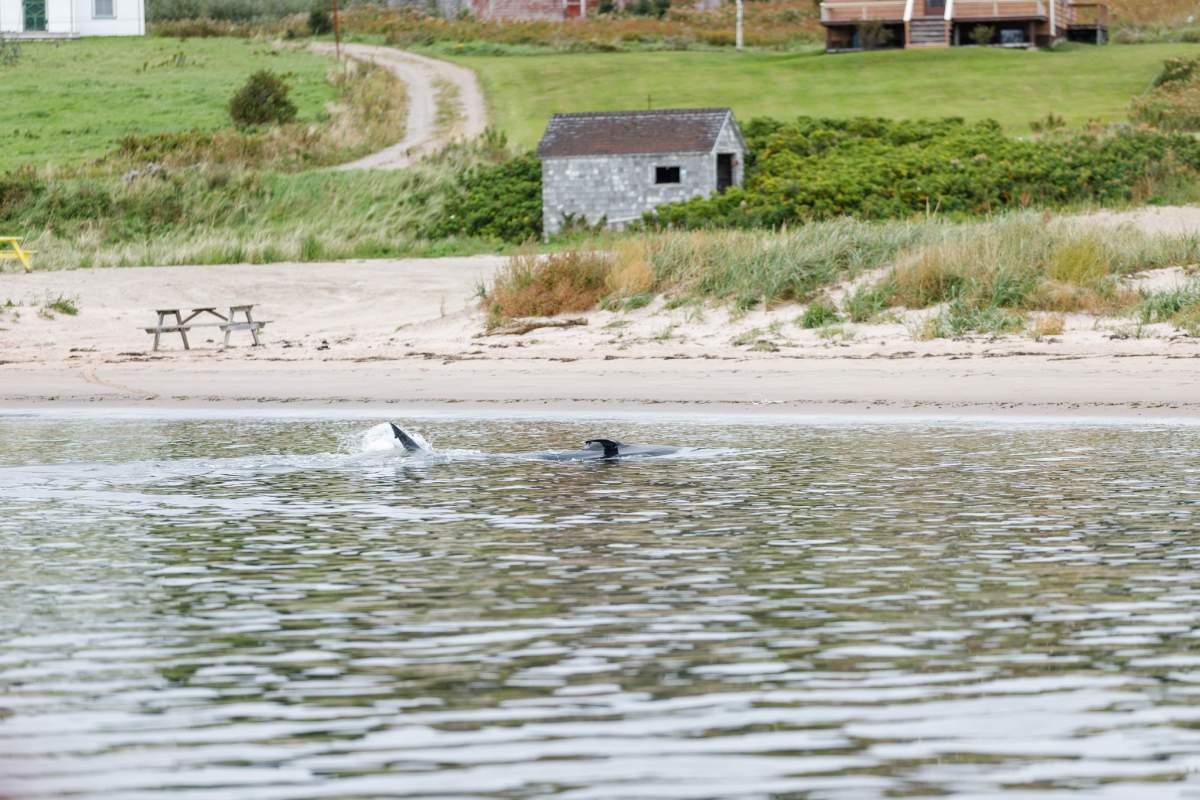A white shark that wowed onlookers before becoming stranded on a Nova Scotia beach has been recovered, but not even a necropsy has revealed what caused the animal to die.

The 14-foot long adult male shark was first spotted last Thursday swimming right up to boats on a wharf in Ingonish, N.S. Video of its encounter shows how close the animal got to shore, as is thrashed in the water.
“It was just astonishing to be six feet away from it … I was speechless,” said Shauna Madden, who was walking her dog on the beach at the time.
The Marine Animal Response Society — a volunteer group that responds to animal strandings and investigates animal deaths — confirms the same shark was later found deceased at nearby Broad Cove Beach.
The carcass unfortunately washed away into the Atlantic before a team of marine experts could examine it, but a few days later, it ended up back on shore.

Get daily National news
Tonya Wimmer, the group’s executive director, called it a “best case scenario.”
“Naturally, over even a few days, an animal can deteriorate quite a bit, and so we were quite lucky that it was still in good shape,” she said.
“Then we we conferred with our colleagues at the vet college to make sure that it was still going to be in good enough condition to do the necropsy. And luckily it was.”
Parks Canada had a vehicle that was large enough to transport the carcass from Cape Breton to the Atlantic Veterinary College in Charlottetown.
There, Wimmer took part in the necropsy alongside wildlife pathologist Dr. Laura Bourque and volunteer, Andrew Wright.
“Our first glance, the animal was actually in really good condition and good body condition — had very healthy fats, very nice, healthy-looking liver, which in these animals is exceptionally substantial for sharks,” said Wimmer, who added the animal didn’t have a lot of food in its stomach.
“(Dr. Bourque) has taken lots of samples to do further diagnostic studies to see if there’s anything that was underlying that may have caused the initial stranding.”
Wimmer said while it’s not uncommon for sharks to come very close to shore when feeding, video of its behaviour prior to its death will be taken into account when determining how it died.
As well, many onlookers had noted the shark’s dorsal fin looked damaged. The necropsy showed the fin had an old injury that had already healed.
The shark’s visit last week churned up a lot of interest locally and online, which only fuels the need to find out what happened.
“On one level, it’s purely of interest in the sense that there were so many people who had seen the shark or people who had tried to help it when they saw it on the beach. And so a lot of people have been asking, ‘Well, what happened?'” Wimmer explained.
“From the point of view of conservation of the species, it is an endangered species protected under Canadian law. And so it’s very important that we have an understanding not only about its biology and how it functions in our ecosystem, but especially if there are any underlying conditions that we should be concerned about — whether they’re natural or human caused.”









Comments